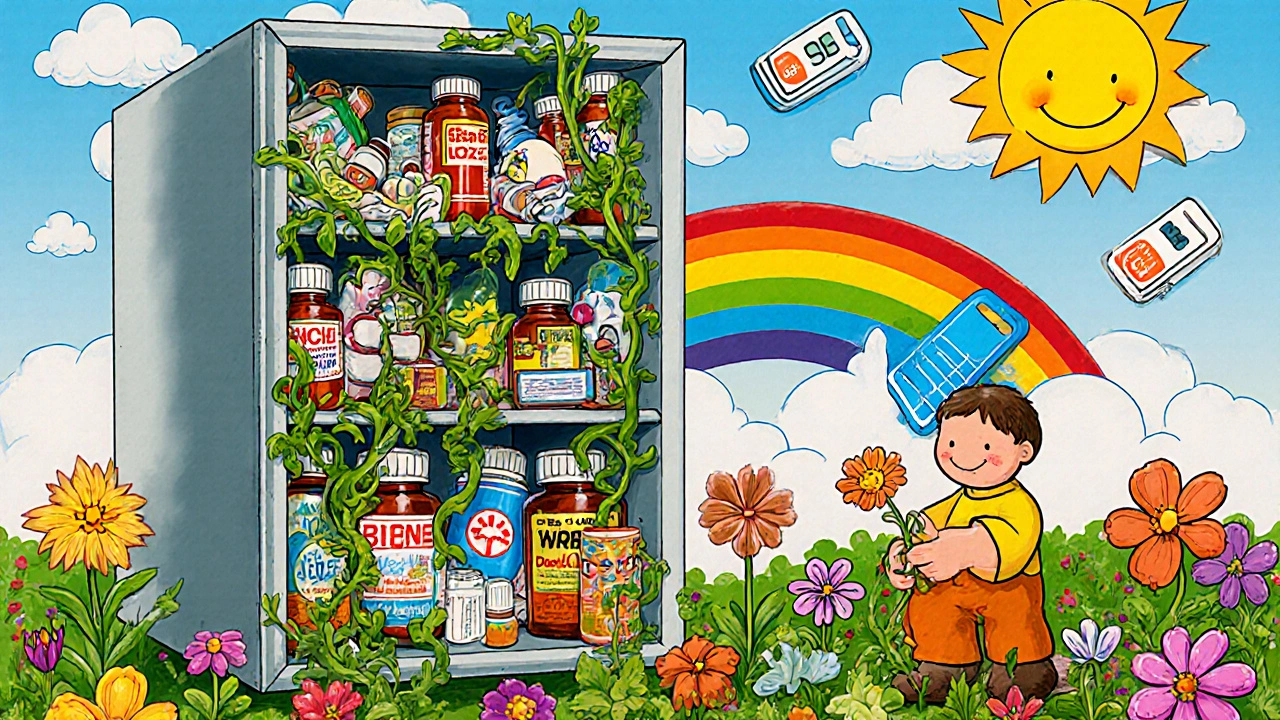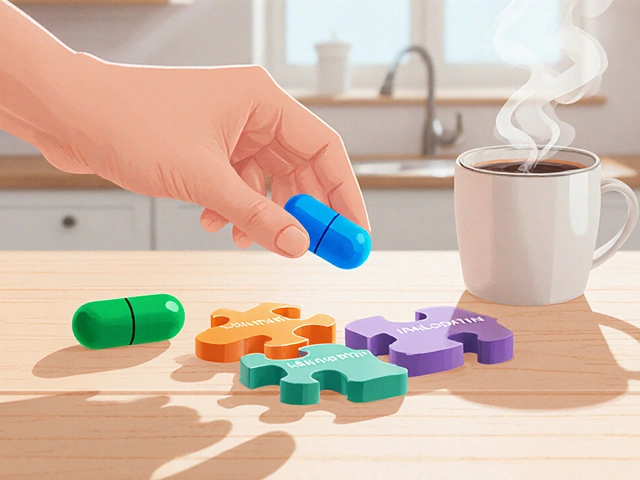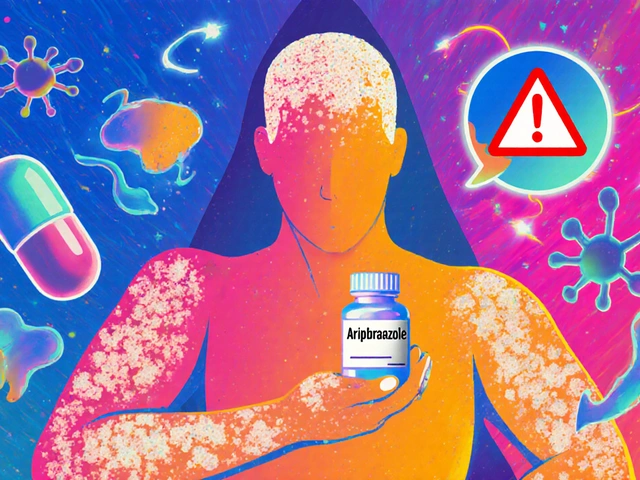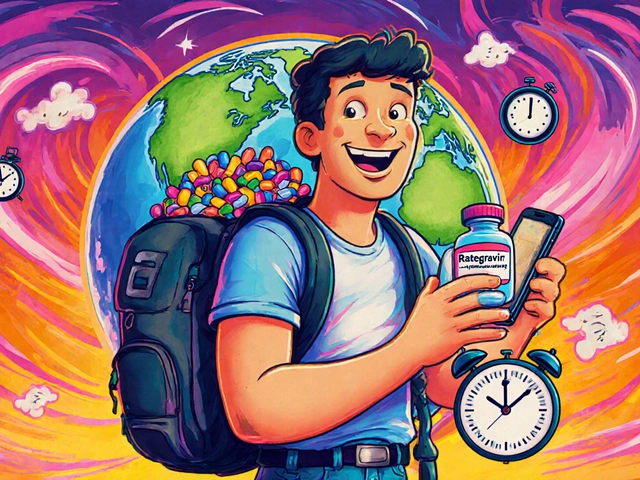Why do patients stick with expensive drugs even when cheaper ones work just as well?
It’s not about money. It’s not about knowledge. And it’s definitely not about laziness.
Every day, millions of people in the UK and beyond skip their pills, delay refills, or stick with costly brand-name drugs even when generic alternatives are available. Doctors assume patients understand the benefits. Pharmacies assume price matters most. But the real reason? Behavioral economics-the science of how real people actually make decisions, not how they’re supposed to.
Take statins. A 2021 study found patients were 23.8% more likely to keep taking them if they were told they’d lose a £50 reward each time they missed a dose. Not because they cared about the cash. But because losing something you already have hurts more than gaining something new. That’s loss aversion. And it’s powerful.
Patients don’t think like economists
Traditional economics assumes people are rational. They weigh costs, benefits, risks, and choose the best option. In reality, patients don’t do that. They don’t crunch numbers. They feel fear, trust, guilt, or hope.
When a doctor prescribes a new drug, many patients think: “This is the one my doctor picked. It must be the best.” Even if a cheaper, equally effective option exists. That’s confirmation bias. They believe the more expensive drug is better-not because of data, but because price = quality in their mind.
A 2022 study showed prescription drug prices in the UK and US rose 47% faster than general inflation since 2010. Yet patients rarely switch. Why? Because changing feels risky. Even if the alternative is proven safe, the fear of something going wrong keeps them stuck. That’s risk aversion. And it’s why 68% of patients stay on their current meds-even when a cheaper option saves them 30%.
Defaults change behavior more than education
Most healthcare programs try to fix adherence by educating patients. Brochures. Videos. Phone calls. But here’s the truth: education alone improves adherence by just 5-8%.
Behavioral interventions? They boost it by 20% or more.
How? By changing the environment-not the person.
At one UK clinic, doctors changed the default option in their electronic prescribing system. Instead of showing the most expensive brand-name drug first, the system now shows the generic alternative as the first choice. Result? Appropriate substitutions jumped by 37.8%. No patient was forced. No one was lectured. They just clicked the first option-and it was the better one.
This is called a “nudge.” It doesn’t restrict choice. It makes the right choice easier. And it works.
Framing matters more than facts
Imagine two signs in a pharmacy waiting room:
- “95% of people who get this vaccine avoid serious illness.”
- “5% of people who skip the vaccine will get seriously ill.”
Which one gets more people to vaccinate?
The first. By a lot. A 2021 trial showed framing efficacy as a gain (95% effective) increased uptake by 18.4 percentage points compared to framing it as a loss (5% at risk). People respond to how information is presented-not just what it says.
The same applies to medication. Saying “Don’t lose your streak!” to someone taking daily pills increases adherence by 19.7%. Telling them “Take your medicine” does nothing. One triggers loss aversion. The other is neutral. One sticks. The other fades.

More pills = less adherence
Every extra pill you add to a regimen cuts adherence by 8.3%.
Patients managing five or more medications? Their adherence rate drops 23.7% compared to those on just one. Why? Cognitive overload. When your brain is full, you forget. Or you give up.
It’s not that they’re careless. It’s that human brains aren’t built to track 12 different pills with 3 different times a day. That’s not a patient failing. That’s a system failing.
Simple fixes work: pill organizers. Once-a-day combinations. Automated refill alerts. One UK hospital reduced missed doses by 31% just by switching from three daily doses to one combined tablet. No extra cost. Just better design.
Beliefs beat biology
Many patients stop taking their meds because they believe the drug is unnecessary-or harmful.
One study found negative beliefs about medication accounted for 41.2% of all discontinuations. Not side effects. Not cost. Just belief.
“I don’t need this if I feel fine.”
“This drug will wreck my kidneys.”
“The doctor just wants to make money.”
These aren’t irrational. They’re human. And they’re rooted in stories, not science.
Successful programs don’t argue with those beliefs. They reframe them. A diabetes program in Bristol replaced pamphlets with short video testimonials from real patients: “I thought I didn’t need insulin. Then I saw my dad’s foot amputation. I didn’t want that for me.”
Adherence rose by 26% in six months.
Money can help-but only if it’s tied to loss
Financial incentives sound like a no-brainer. Give people cash for taking their pills.
But here’s the twist: reward systems that give money upfront and take it away if you miss a dose? They work. Reward systems that just give money after you take the pill? They don’t.
Kevin Volpp’s 2021 NEJM study found patients who could lose £50 for skipping statins had 23.8% higher persistence than those who got £50 for taking them. The threat of loss is twice as powerful as the promise of gain.
That’s why some UK insurance plans now offer rebates-£20 back each month you refill on time. Not as a bonus. As a refund you’ve already earned. You’re not being paid. You’re avoiding a loss.
Technology helps-but only if it’s simple
Smart pill bottles that beep when you miss a dose? Great in theory. But in practice, 42% of patients stop using them after three months. Why? Too complicated. Too loud. Too much tech.
Simple SMS reminders? They cost £8.25 per patient per month. And they improve adherence by 15%.
Smart bottles? £47.50 per month. And only 24.3% higher adherence than SMS. The extra cost? Not worth it for most.
The best tech doesn’t do more. It does less. A text that says “Your refill is ready” works better than an app that tracks your mood, sleep, and pill count.

Why some interventions fail
Not all behavioral tricks work everywhere.
In oncology, where treatment is brutal and options are limited, behavioral nudges have little impact. Only 12.3% of cancer programs use them. Why? Because when you’re fighting for your life, a nudge won’t change your mind.
Same with severe depression. Patients with major mental health conditions respond 31.4% less to behavioral interventions. Their brain isn’t processing cues the same way. For them, the problem isn’t choice architecture. It’s access to care.
And there’s another problem: sustainability. Only 34.2% of programs keep their results after 12 months. The first three months? Magic. After that? People forget. Or the system reverts.
The key? Make the nudge part of the system-not a one-off campaign.
The real cost of ignoring behavior
Non-adherence isn’t just a patient problem. It’s a system crisis.
In the UK, it costs the NHS over £1 billion a year in avoidable hospital visits, emergency care, and wasted prescriptions. In the US, it’s $289 billion annually-and causes 125,000 preventable deaths.
Yet most health systems still spend more on advertising drugs than on helping patients take them.
Meanwhile, the market for behavioral economics in healthcare has grown from $187 million in 2018 to $432 million in 2022. Pharma companies are investing in it. Payors are requiring it. The NHS is starting to test it.
Why? Because it works. And it’s cheap.
What’s next?
The future of medication adherence isn’t in bigger pills or smarter apps. It’s in smarter systems.
Machine learning is now being trained to predict which patients will respond to loss aversion, which need defaults, which respond to social proof. One pilot showed this personalization could boost effectiveness by 42.3%.
And the FDA and NHS are starting to require it. In 2023, the FDA asked drug companies to evaluate “the impact of dosing frequency and route of administration on patient decision-making.” That’s behavioral economics in regulation.
Value-based insurance is now using behavioral design to steer patients toward generics. PBMs are building “nudge layers” into formularies. Clinics are training staff to ask: “What’s the easiest way for this patient to take this?”
It’s not about controlling people. It’s about respecting how they think.
Final thought: You can’t fix behavior with information
Patients don’t need more facts. They need simpler choices, clearer defaults, and fewer barriers.
They don’t need to be told why they should take their pills. They need to be shown how easy it is to do so.
Behavioral economics isn’t magic. It’s common sense. Applied with precision.
And for the first time, healthcare is starting to listen.




